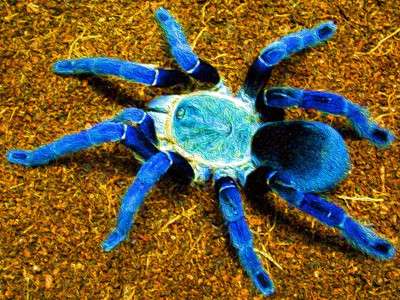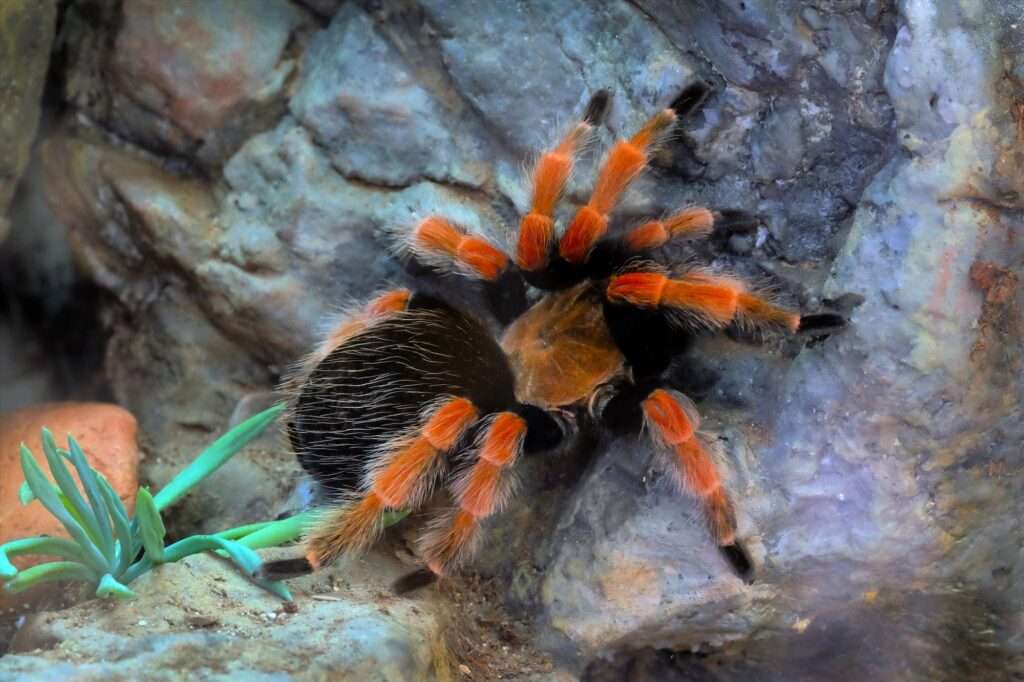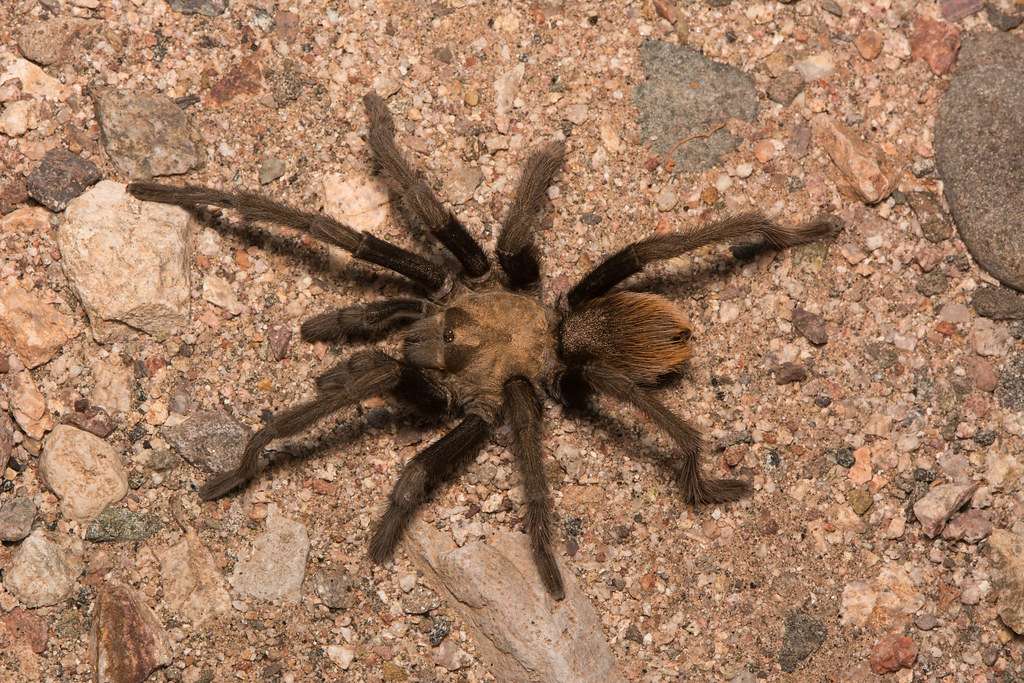
Skeleton tarantulas are medium-sized spiders that feature skeletal-like markings on their legs. Their carapace is lighter brown in color than their abdomen, and both are covered in setae, which are spiky hairs. They are indigenous to the South American nations in the northeast. This species is feisty and hostile, in contrast to the majority of tarantulas, which are easygoing and placid. They have the unusual ability to flick their itch-inducing body hairs from the front.
Appearance
- Theraphosidae (tarantulas), subfamily Aviculariinae, includes the species of spider known as the skeleton tarantula, Ephebopus murinus. It is a native of various South American nations and is a species of the New World. The skeleton-like markings on its legs are the source of the species’ common name.
- The white markings on the legs of the skeleton tarantula resemble skeletal bones. There are two white stripes around the knee, followed by a longer white stripe. The tarantula’s body is made up of a lighter brown, almost golden carapace and a dark brown, hairy belly (head section).
- Pedipalps are the name for the projections that give them the appearance of having two extra legs up front. The only tarantula that can flick its urticating hairs from the front with its pedipalps is the skeleton tarantula.
- Other tarantula species, on the other hand, can only flick the urticating hairs off the back of their abdomen. The largest females have a leg spread of 4-5 inches, while the males are slightly smaller. The males are a little bit skinnier than the females, but they both have the same colors and patterns.

Habitat
The habitat of skeleton tarantulas is another distinctive characteristic. The baby spiderlings initially live in trees and are arboreal. As they age, they transition to a lifestyle on Earth. Adults in the lowland tropical forest where they reside will dig underground burrows to escape the heat. They may build a webbed nest on the ground between rocks, fallen tree branches, or other covers if they are not residing in a burrow.
Northeastern South America, including Brazil, French Guiana, and Suriname, is home to the skeleton tarantula.
What Consumes Tarantula Skeletons?
Tarantula skeletons are consumed by lizards, birds, snakes and tarantula hawks.
Reproduction
When they are between three and four years old, males emerge from their burrow in search of a partner. They must approach a female’s burrow with caution. Additionally, the females cannot be interested in mating and instead decide to consume the male. Even if she is initially open to the male and lets him mate with her, she might afterwards eat him. Perhaps this is nature’s way of converting vital protein into support for the females’ reproductive cycle as males that escape end up dying shortly after mating anyhow.
Lifespan
The skeleton tarantula’s lifespan is comparable to that of other tarantulas, with females living far longer than males. Males only survive about three to four years whereas females can live up to 15 years.
Keeping as Pet
The Skeleton tarantula is accustomed to living in a hot, tropical climate. The ideal temperature for this species seems to be between 25 and 28 oC. If you choose to use artificial heating, make careful to just heat a portion of the cage (experts advise heating approximately 1/3 to 1/2 of the cage). Your tarantula will be able to move about and find the ideal location in this way.
Table





